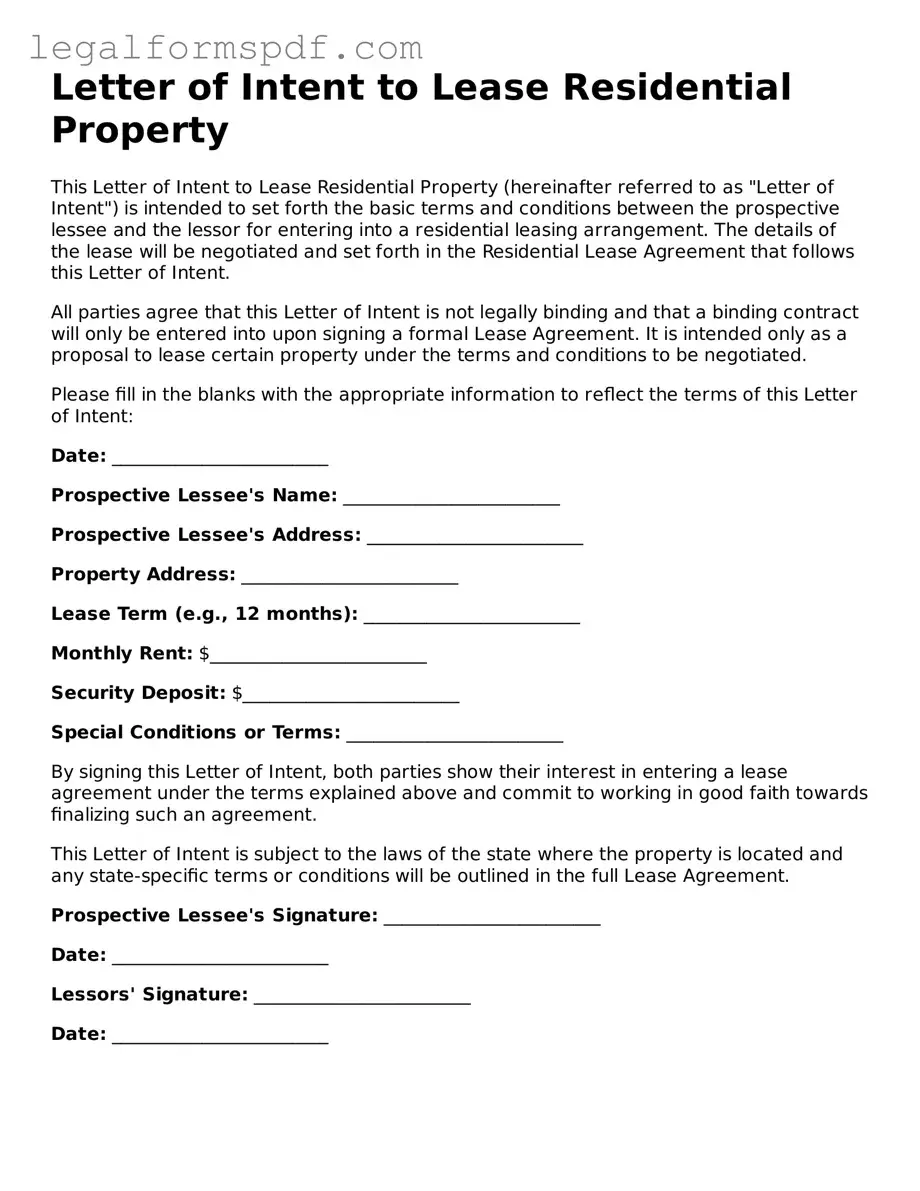What is a Letter of Intent to Lease Residential Property?
A Letter of Intent to Lease Residential Property is a preliminary document between a potential tenant and a landlord. It outlines the primary terms of a future lease agreement, such as rental amount, lease duration, and property details. Although typically non-binding, it signifies serious interest from the potential tenant to lease the specific property under the discussed terms.
Why is a Letter of Intent important?
This letter plays a crucial role in the leasing process as it serves as a formal way to express interest in renting a specific property. It helps in aligning the expectations of both parties before entering into a binding lease agreement, potentially saving time and avoiding misunderstandings later on.
What details should be included in the Letter of Intent?
The letter should clearly state the property’s address, the proposed lease term, the monthly rent, security deposit amount, any specific conditions or modifications requested by the potential tenant, and other terms relevant to the lease. Including clear contact information for both the tenant and landlord is also essential for smooth communication.
Is the Letter of Intent to Lease legally binding?
Generally, the Letter of Intent itself is not legally binding concerning the lease agreement. However, it may contain provisions that are binding, such as confidentiality requirements or a promise to negotiate in good faith. Therefore, it's important to carefully review and understand all the terms before signing.
Can I withdraw a Letter of Intent to Lease?
Since the letter is typically non-binding regarding the lease agreement, a party can usually withdraw their letter of intent without legal consequences. However, it is important to do so formally and courteously, preferably in writing, to maintain professionalism.
What happens after the Letter of Intent is signed?
After signing the letter, both parties engage in further negotiations to finalize the lease agreement. The terms outlined in the Letter of Intent serve as a framework for these discussions. Once both parties agree on all lease terms, a formal lease agreement is drafted for signing.
Should I consult a lawyer before issuing a Letter of Intent?
While not always necessary, consulting with a lawyer can provide valuable insight, especially in complex situations or if the letter contains any binding terms. A lawyer can help ensure that your interests are adequately protected and that you fully understand the implications of the document.
How does a Letter of Intent differ from a lease agreement?
A Letter of Intent is a preliminary document that outlines the basic terms for a potential lease agreement and expresses intent to lease, without creating a binding contract to lease the property. In contrast, a lease agreement is a binding contract that sets forth the rights and obligations of both the landlord and tenant concerning the rental property.
Can modifications be made to the terms after the Letter of Intent is signed?
Yes, since the letter typically does not create a binding agreement regarding the terms of the lease, modifications can be proposed and negotiated by either party before finalizing the lease agreement. However, any changes should be made in writing and agreed upon by both parties.
